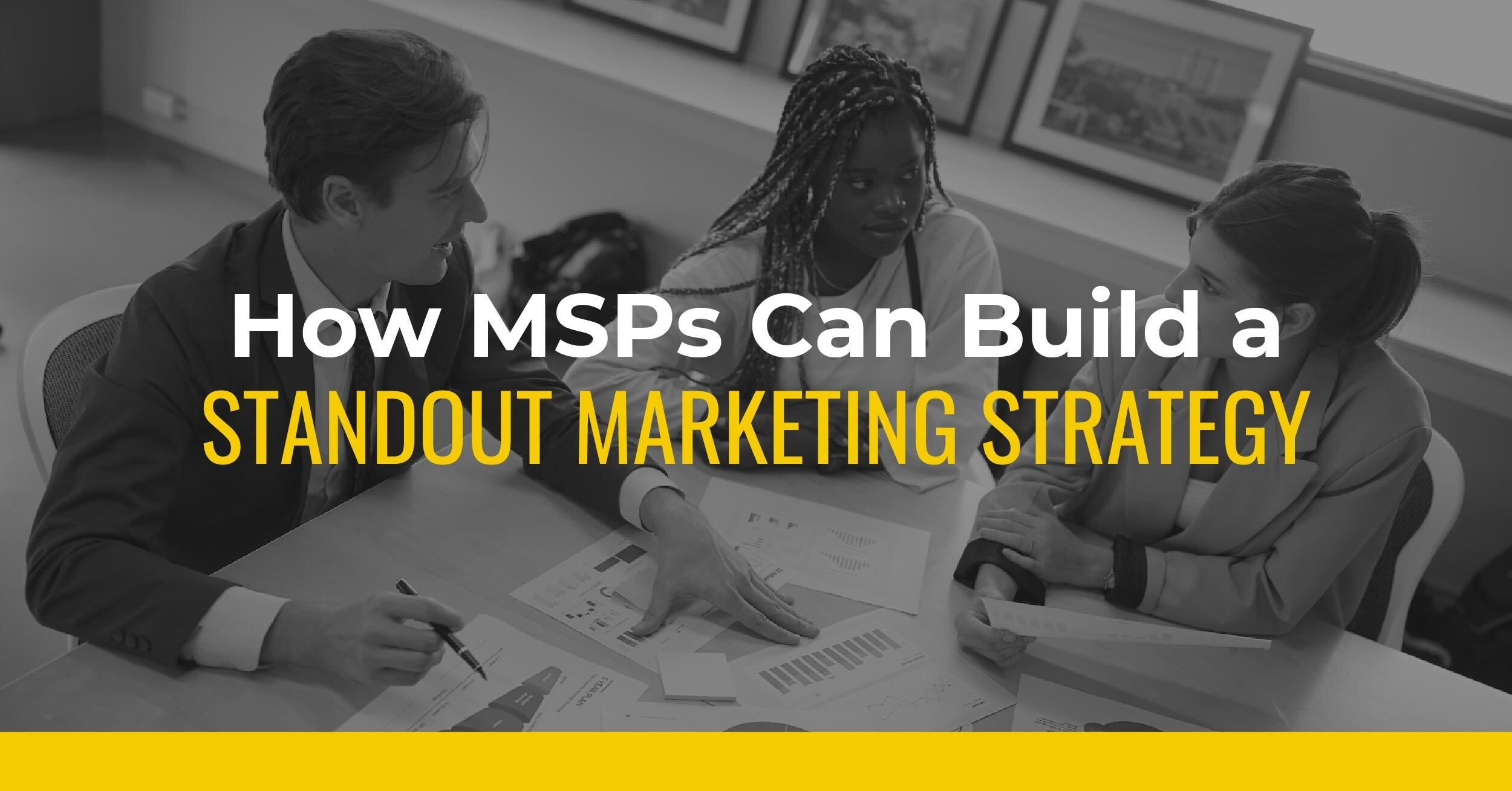Competition in the Managed Service Provider (MSP) space is fiercer than ever. With rapid advancements in technology and an increasing number of MSPs entering the market, you may be wondering, how can I differentiate my business?
Creating a marketing strategy that truly stands out isn’t just about being louder—it's about being smarter. The key is connecting with your ideal clients, offering value they can’t ignore, and crafting a sustainable plan that consistently delivers results.
If you’re a managed service provider looking to grow your client base and strengthen your reputation, this guide will walk you through everything you need to know to create a winning marketing strategy.
Understanding Your Ideal Client
Before you can build an effective marketing strategy, you need to know who you’re marketing to. Your ideal client—whether they’re a small business, a mid-level enterprise, or another IT professional—will determine your messaging, channels, and approach.
Define Needs and Pain Points
Start by understanding the challenges your target audience faces. Are they struggling with cybersecurity threats? Does their outdated infrastructure slow their productivity? Once you identify their pain points, you can position your MSP as the solution to their problems.
Think of how you’d answer these questions for your audience:
- What keeps them awake at night?
- What barriers are stopping them from achieving their goals?
- What services are they currently using, and why are those falling short?
Use surveys, industry research, and direct conversations with potential clients to gather this data. The more precise your insights, the better you'll connect with your audience.
Differentiating Your MSP
Once you understand your market, the next step is to stand out from the crowd. This begins with developing a Unique Value Proposition (UVP)—a short, compelling statement that sums up why your services are the best choice for your ideal clients.
What Makes You Unique?
To craft your UVP, assess what you do better than your competitors. Do you provide 24/7 IT support at no extra cost? Are you compliant with stringent security regulations? Do you specialize in certain industries, like healthcare or finance?
For example, instead of saying, "We keep your IT running," a UVP like, "We eliminate downtime with guaranteed response times for critical issues, 24/7/365," communicates clear benefits and builds trust.
By highlighting your strengths, you're ensuring potential clients immediately see value in what you offer.
Content Marketing for MSPs
Creating Valuable Resources
Did you know that 72% of B2B buyers consume 3-5 pieces of content before making a purchasing decision? This is your golden opportunity to educate, engage, and build trust through content marketing.
Here’s what works particularly well for MSPs:
- Case Studies: Share how you resolved complex IT problems for clients and the results achieved.
- Blogs & Whitepapers: Write about topics like “How to Protect Your Business from Ransomware” or “The Ultimate Guide to Cloud Migration.”
- Videos & Tutorials: Create explainer videos that simplify technical concepts for non-technical decision-makers.
- Webinars: Host informational webinars about trends like cybersecurity or digital transformation.
Valuable content positions you as a thought leader in your industry—someone clients can trust not just to solve their current challenges, but to guide them through future uncertainties.
Leveraging Social Media
Engaging IT Professionals Online
Think social media is just for B2C companies? Think again. Platforms like LinkedIn and Twitter are powerful tools for connecting with your audience, building authority, and generating leads.
Here’s how MSPs can win on social media:
- LinkedIn: Share insights, post engaging content, and connect with IT decision-makers. For example, share articles like “5 IT Security Trends Every Business Should Know in 2024.”
- Twitter: Use it to stay part of the conversation around IT trends. Create threads breaking down technical problems (“How to Configure Multi-Factor Authentication in 5 Steps”).
- TikTok and Instagram: Short video content is gaining traction, even among professionals. Show behind-the-scenes looks at how you protect networks or creative hacks for IT efficiency.
The key is consistency—consistent value, consistent tone, and consistent posting frequency.
Measuring and Adapting
Use Analytics for Continuous Improvement
Without tracking your efforts, you’re essentially marketing blind. Thankfully, tools like Google Analytics, HubSpot, or LinkedIn Insights make it easy to measure performance.
Focus on metrics that give you insights into success:
- Website Traffic: Are your blog posts driving new visitors?
- Lead Generation: Analyze how many leads your content and social campaigns bring in each month.
- Conversion Rates: Track how many of those leads convert into paying clients.
- Retention Rates: Great services retain happier, long-term clients. Use customer feedback to continuously improve.
Based on these data points, tweak your strategy. Did a webinar underperform? Maybe the topic wasn’t relevant enough. Did LinkedIn engagement spike after a particular post? Lean into more of that content type.
Adjusting based on results ensures you're always heading toward greater efficiency and ROI.
Build a Marketing Strategy That Lasts
Standing out in a crowded MSP market doesn’t happen overnight—but the good news is success lies in consistent, customer-centric actions. By understanding your clients' pain points, defining what makes you different, and utilizing tools like content marketing and social media, your business will reach and retain the clients that matter most.
Want to make your marketing easier? Partner with the experts. At Gorilla, we help MSPs refine their marketing strategies to attract and retain high-value clients.
Contact us to simplify your marketing efforts and drive results with confidence.


![[CTA] General blogs (6)](https://gorillasrule.com/hs-fs/hubfs/%5BCTA%5D%20General%20blogs%20(6).jpg?width=2500&height=654&name=%5BCTA%5D%20General%20blogs%20(6).jpg)